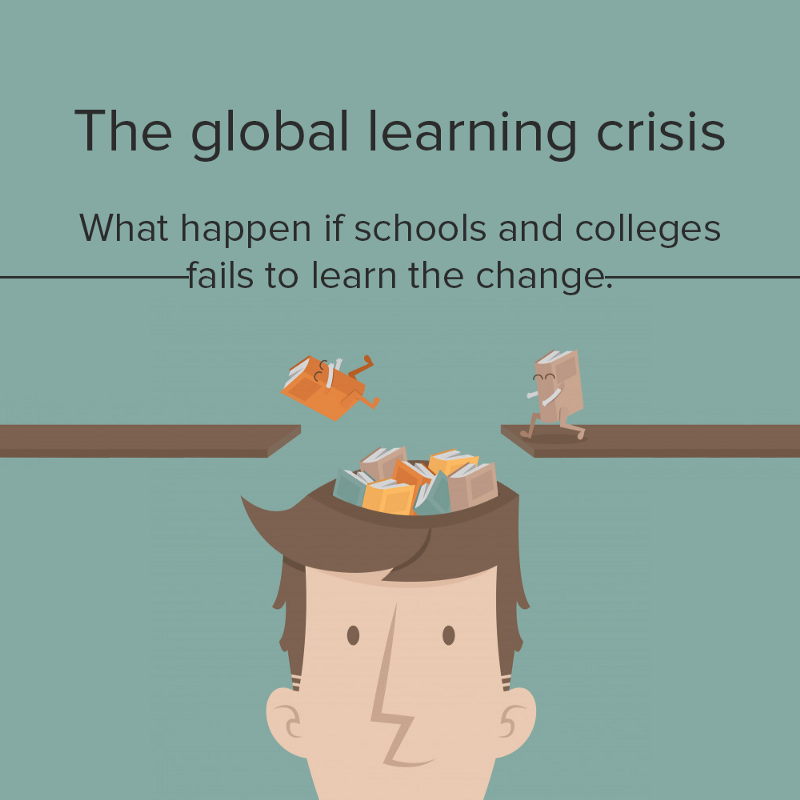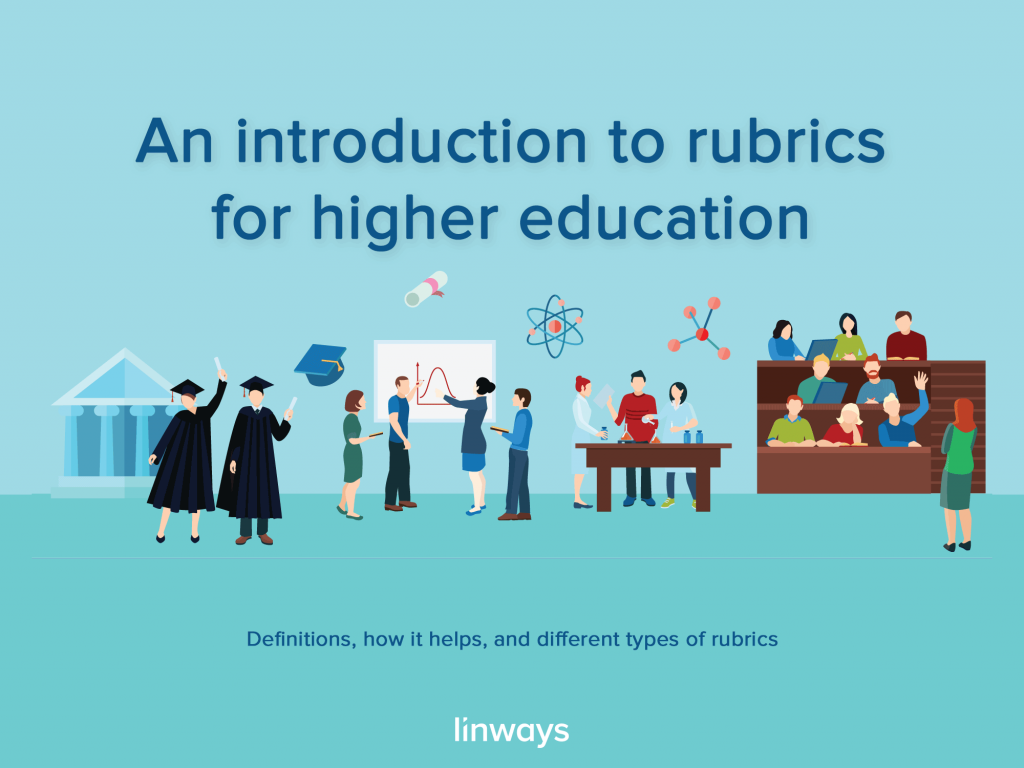
What is rubrics
Rubrics, in education, is an assessment guide used to evaluate learning. It’s a scoring guide, a set of criteria for grading assignments. Most formal education systems use some level of rubrics in their teaching-learning process to evaluate learners and assign grades/marks/scores etc.
Rubrics describes the level of quality for each learning assignment.
How Rubrics help to improve teaching-learning
Rubrics helps teachers to focus on their goals and derive a concrete set of guidelines. Rubrics, in writing, is a guide for assessments and tests in learning quality. It helps to
- Set clear guidelines and targets for the classroom. This in turn will help to reduce time and energy spent on creating and tracking learning outcomes. Instead, you will be able to focus more on achieving them.
- Provide meaningful feedback that is clear, directed, and focused on ways to improve learning.
- Simplify outcomes and goals so teachers can focus on the work with better insights instead of guessing “what the classroom needs.”
- Adapt the teacher’s approach to the core learning principles of a course. It also helps to identify any missing links in student engagement and learning behaviors that shall be easily identified by drawing insights from rubrics of a batch/class.
- Develop consistency in how you evaluate learning outcomes and improve quality in teaching process.
Rubrics also helps students to have a better understanding of the course and assignments. So they will be able to contribute in a more meaningful manner. Since there are a clear set of criteria that the entire learning process is based on, it will help students to understand and appreciate various teaching methods, and offer better insights and useful feedback that the teacher can use in their advantage.
What does a rubric looks like
This is a tough one. Since a rubric is essentially a plan, it can be modified, rearranged, and designed to suit unique needs and requirements of a classroom, institution, or a teacher. However, leaning on popular models and feedback from experienced academicians, we have prepared a few classifications of rubrics that should give you an idea of how a rubric looks like.
Classification
- Holistic rubric
Since this is a one-dimensional assessment scale, all the evaluation criteria are considered together. With a holistic rubric, the teacher assigns a single score based on an overall judgment of the student’s work. Holistic rubrics works well when there is no one correct answer or response for a criterion and the focus is on overall quality, proficiency, or understanding of a specific assessment metrics.
During assessment, teacher matches the student’s work as a whole to a single criterion in the scale. However, an argument can be made that this type does not leave room for detailed feedback on student work based on multiple checkpoints or particular features of quality.
Here’s a generic model of a holistic rubric in action.
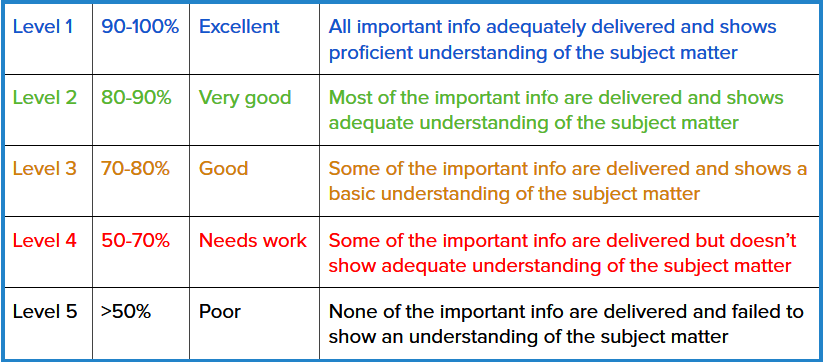
- Analytic rubric
This type of rubric is two dimensional. It’s like a grid where criteria are listed as columns and levels of achievement are featured in rows. This type of rubric is particularly helpful for assessing problem solving or application of information in various fields. The teacher assigns points for each criterion. If you want to gather insights on areas of strengths and weaknesses, this method is perfect. However, it takes more time to develop analytic model rubrics than a holistic model of rubric.
The analytic model also contain descriptions of what each criteria looks like for each level of performance. Each of the criteria is scored individually when scoring with an analytic rubric. You can assign different values to different criteria and conclude to the overall achievement score by adding up achievements of various criteria.
Here’s how analytic rubric looks like for multiple criteria
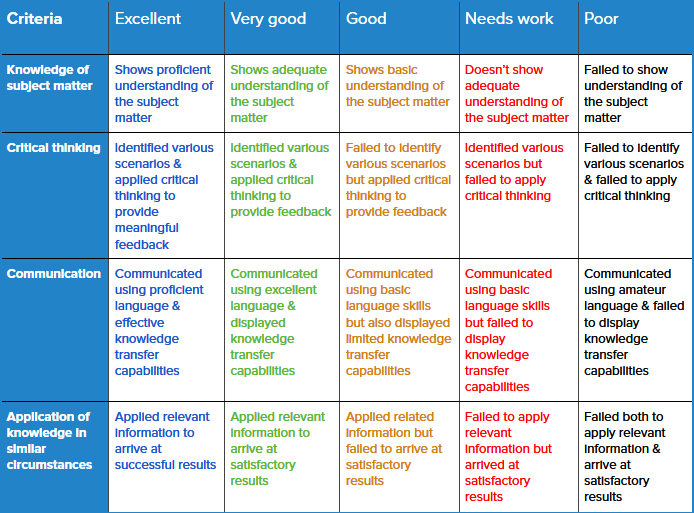
- Checklist rubric
Checklist is a distinct type of rubric that uses only two levels of assessment. As the name suggests, checklist rubric is a plain “Yes/No” or “Achieved/Not-Achieved” model. We use the checklist rubrics model to measure sub-criteria and quantitative analysis. For this very same reason, checklist model is longer than other kinds.
Checklists are easy to use and quicker to analyse. Using checklists also helps in reaching more consistent grading decisions over multiple times. For instance, all teachers know what the top performances look like and what the poor performances look like. But the middle is always unclear
Here’s a basic checklist rubric for your reference.
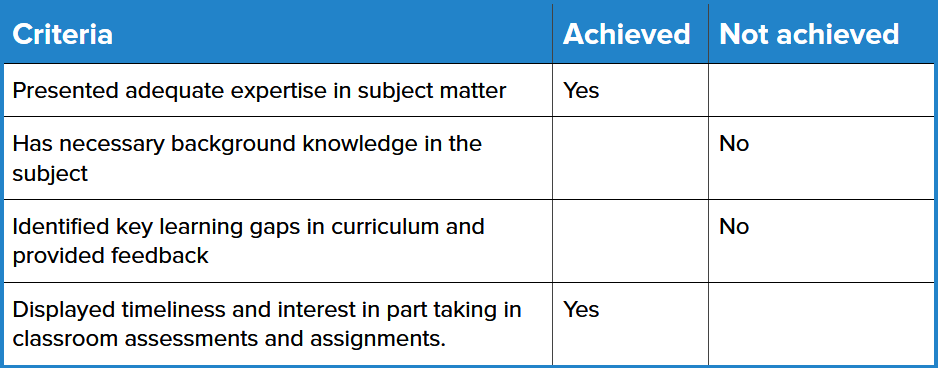
The important thing to keep in mind is that each of these rubrics can be even classified and divided to suit your unique needs and requirements. No two classrooms are alike, and no two students are similar. As a teacher, you need to adapt to the learning trends and revise your strategies every now and then to keep improving.
We will discuss about developing a Rubric for higher education, and it’s application in our next blog that’ll reach you soon. Please subscribe to keep posted on our latest updates on education, teaching-learning, academics, edtech, and more.
Also published on Medium.



